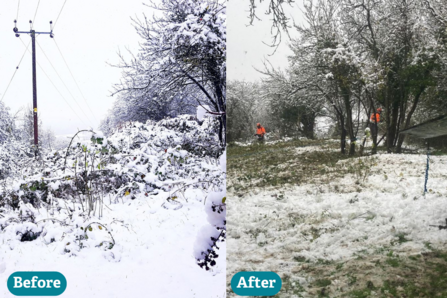On those short winter days, when the sky never brightens and the mizzle (somewhere between mist and drizzle) sets in, it is easy to question why you would ever leave the warmth of home! I have been fortunate to be part of this fantastic traineeship, where you put these thoughts to one side, pack your flask, grab your waterproofs and set out every day to see what needs tending to on our wonderful reserves. I can promise you that once out and stuck into fixing a fence, coppicing a ride side or clearing the latest storm damage, I am always left with a smile on my face and an incredible sense of how lucky I am to spend my days in these precious parts of the Worcestershire landscape.
Although the wildlife has hunkered down and most plants have died back to conserve their energy for spring, the winter months have been anything but quiet for the practical conservation team. A flurry of activity has been taking place across our many reserves, making the most of nature’s slumber, undertaking crucial habitat management work to our woodlands, grasslands, heathlands and (flooding permitting) wetlands.
One cold, sunny morning I joined Andy and our hardy rovers to help with the heathland management at The Devils Spittleful. The fun winter task involved extracting over enthusiastic broom using the delightfully named ‘tree poppers’ by literally clamping onto the plant base then levering it out, roots and all - a job that quickly warms you up! Although scrub control appears ruthless, heathland thrives as a mosaic of habitats. So for a healthy heathland and diverse wildlife, it is important to have a structural and age diversity of vegetation. If one species is left unchecked, it can soon take over, overshadowing more delicate and slow growing species that thrive on the low nutrient, sandy and acidic heathland soils. This can lead to natural succession, as the scrub provides cover for saplings to get away. Over time, the soil becomes enriched and sections of heathland slowly convert into secondary woodland. By replicating traditional management, which historically utilised the many plant species for household products (such as broom stems to make the brush heads on brooms), we preserve these special habitats. Working through the towering swathes of broom, we were rewarded as heather and other heathland species were revealed beneath, which come summer will be a buzzing carpet of purple.


